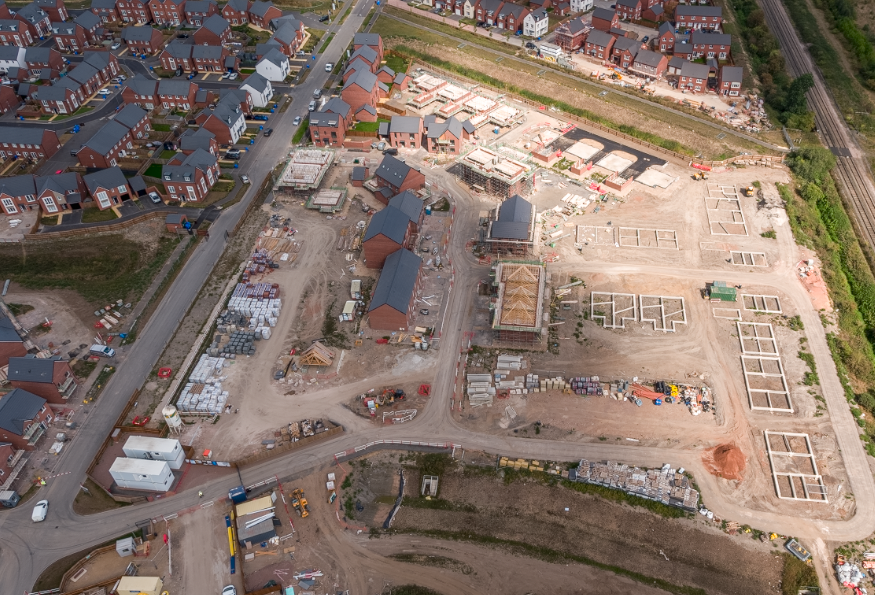Capturing Construction: A Drone Photography Case Study
Whether it’s shooting a dazzling wedding ceremony from high above or showcasing a real estate property in all its glory, drone photography has made its mark in multiple industries. The construction sector is no exception. As structures rise from the ground, drones have become the perfect tool to monitor progress, inspect work, and provide engaging visual documentation of the project. This post delves into the fascinating world of drone photography at construction sites, with a case study highlighting its unique attributes and challenges.
An Overview of Drone Photography at Construction Sites
Drones have taken center stage in redefining the documentation and monitoring of construction projects. These nimble flying devices deliver unmatched views from the sky, providing a unique lens to visualize a project’s magnitude and advancement. They have become a game-changer for mapping terrains and chronicling every stage of construction. This aerial perspective not only offers stunning visuals but also serves as an instrumental tool for project management in the construction realm. From skyscrapers to sprawling infrastructure projects, drones are painting a more complete, detailed picture of the evolving landscape below.
How to Prepare for Drone Photography at Construction Sites
Getting ready for drone photography at a construction site calls for meticulous preparation. Begin by obtaining necessary permits and ensuring adherence to local drone laws. Running pre-flight checks is also paramount to assure the drone’s operational readiness. Engaging site managers in the planning phase can be advantageous, providing insights on key vantage points to capture and highlighting any possible hurdles or safety risks on site. The better the preparation, the smoother the drone operation will be.
The Process of Drone Photography at Construction Sites
Taking flight for a drone photography mission at a construction site unfolds in stages. First, the drone operator conducts an on-ground site survey to get the lay of the land. Next, an intricate flight path gets charted and fed into the drone’s navigation system. Then, it’s time for lift-off. As the drone soars and follows the plotted trajectory, it snaps high-definition pictures and records footage. Depending on the project scope and complexity, multiple flight sessions might be required to capture every nook and cranny. Remember, thorough groundwork paves the way for a successful aerial operation.
Overcoming Challenges in Drone Photography
Operating drones at construction sites is not without its share of obstacles. Weather conditions can be unpredictable, causing flight delays or affecting image quality. Interference from other electronic equipment on site can disrupt drone operations. Legal restrictions may limit where and when drones can fly. And of course, ensuring the safety of all personnel amidst the bustle of a construction site is paramount. However, these obstacles aren’t insurmountable. By careful planning, understanding local regulations, and enlisting a seasoned drone operator, these challenges can be successfully navigated to capture compelling aerial images.
The Impact of Drone Photography on Construction Projects
Drone photography’s influence on construction projects is far-reaching and profound. This aerial approach offers an unprecedented perspective for monitoring the work in real-time, assisting in the management of tasks, and identifying potential issues early on – potentially saving both time and money. This bird’s eye view also facilitates open communication with stakeholders, offering them a fresh way to stay connected with the project’s progression. Plus, the creation of time-lapse videos presents a captivating and dynamic method of chronicling the construction journey. The impact is clear: drone photography isn’t just about capturing beautiful images; it’s also a strategic tool that can revolutionize project management.
Harnessing Drone Photography for Better Construction Management
Drone technology offers significant advantages in the realm of construction management. Utilizing drones allows for comprehensive project monitoring, ensuring timelines are adhered to and quality benchmarks are met. Moreover, drones play a pivotal role in enhancing safety measures on site. They can readily identify potential hazards, such as unstable structures or hazardous materials, that might go unnoticed from a ground-level perspective. This aerial surveillance facilitates a more secure and productive construction environment. The integration of drone technology can elevate construction management to new heights.

